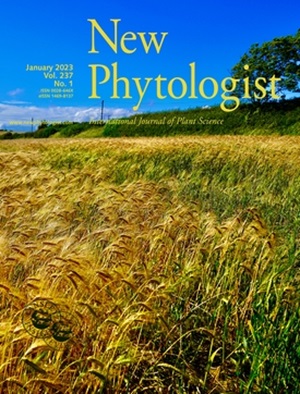Arabidopsis perceives caterpillar oral secretion to increase resistance by reactive oxygen species-enhanced glucosinolate hydrolysis
IF 8.3
1区 生物学
Q1 PLANT SCIENCES
引用次数: 0
Abstract
- In Arabidopsis, the outbreaks of reactive oxygen species (ROS) occur upon pathogen recognition by pattern- and effector-triggered immunity (PTI and ETI, respectively), which plays a significant role in disease resistance. Here, we found that Arabidopsis also experiences two outbreaks of ROS (oral secretion (OS)-induced ROS (ROSOS)) upon the perception of OS from cotton bollworm (Helicoverpa armigera) and other lepidopterans.
- Oral secretion-induced ROS burst requires the PTI machinery, including BRI1-ASSOCIATED RECEPTOR KINASE1 (BAK1) and BOTRYTIS-INDUCED KINASE1 (BIK1). Oral secretion-induced ROS are primarily produced by respiratory burst oxidase homologue D (RBOHD) in the apoplast, and the double mutant, rbohdf, exhibits reduced resistance to lepidopterans.
- Insect biting rather than wounding induces the gene expressions of plant defense-associated respiratory burst and toxin catabolic processes, facilitating the breakdown of leaf glucosinolates into bioactive intermediates, like sulforaphane, thereby impeding insect herbivory.
- Our investigation demonstrates that Arabidopsis perceives insect OS in a BAK1-BIK1-dependent manner and employs RBOHD to produce ROS in the apoplast, thereby enhancing its insect resistance by accelerating glucosinolate hydrolysis.
求助全文
约1分钟内获得全文
求助全文
来源期刊

New Phytologist
生物-植物科学
自引率
5.30%
发文量
728
期刊介绍:
New Phytologist is an international electronic journal published 24 times a year. It is owned by the New Phytologist Foundation, a non-profit-making charitable organization dedicated to promoting plant science. The journal publishes excellent, novel, rigorous, and timely research and scholarship in plant science and its applications. The articles cover topics in five sections: Physiology & Development, Environment, Interaction, Evolution, and Transformative Plant Biotechnology. These sections encompass intracellular processes, global environmental change, and encourage cross-disciplinary approaches. The journal recognizes the use of techniques from molecular and cell biology, functional genomics, modeling, and system-based approaches in plant science. Abstracting and Indexing Information for New Phytologist includes Academic Search, AgBiotech News & Information, Agroforestry Abstracts, Biochemistry & Biophysics Citation Index, Botanical Pesticides, CAB Abstracts®, Environment Index, Global Health, and Plant Breeding Abstracts, and others.
 求助内容:
求助内容: 应助结果提醒方式:
应助结果提醒方式:


